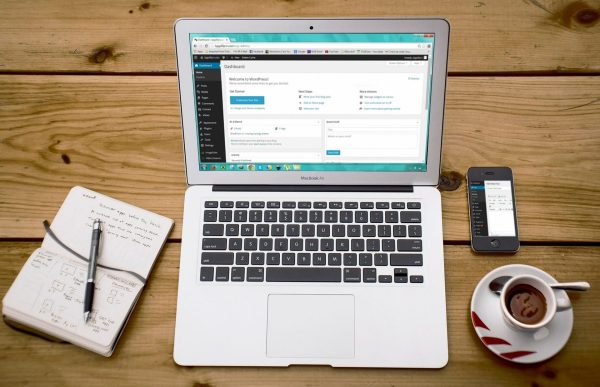When it comes to digital marketing, landing pages play a crucial role in driving conversions and achieving business goals. But what exactly is a landing page? In this article, we will explain what landing pages are, their purpose, and how they can be used to achieve marketing objectives.
What is a Landing Page?
A landing page is a standalone web page that is designed to serve a specific purpose, such as to capture leads, promote a product or service, or drive sales. Unlike a website’s homepage or other pages, landing pages have no navigation links, which keeps visitors focused on the main objective of the page.
Landing pages are designed to be simple and to the point, with a clear call-to-action (CTA) that encourages visitors to take a specific action. They usually have a headline, some explanatory text, a visual element such as an image or video, and a form where visitors can submit their information. The form is typically the main element of the page, as it allows businesses to collect valuable information about potential customers, such as their email address, name, phone number, or any other data relevant to their marketing efforts.
Landing pages can be used for a variety of purposes, such as:
- Collect leads: Businesses can use landing pages to collect leads by offering valuable resources, such as eBooks, whitepapers, or webinars, in exchange for visitors’ contact information.
- Promote a product or service: Landing pages can be used to showcase a product or service and provide information about its features and benefits, as well as to encourage visitors to purchase or sign up for a free trial.
- Drive sales: Landing pages can be designed to highlight a specific product or service and encourage visitors to make a purchase, either directly on the page or by redirecting them to a sales page.
- Test different marketing strategies: Landing pages can be used to test different marketing strategies, such as different headlines, visuals, or CTAs, to see which ones perform better and improve future campaigns.
Why are Landing Pages Important?
Landing pages are important for several reasons, including:
- hey help businesses achieve specific goals: Landing pages are designed to achieve a specific goal, such as to capture leads or drive sales, which makes them highly effective in achieving marketing objectives.
- They improve the user experience: By removing distractions and focusing on a single objective, landing pages improve the user experience and make it easier for visitors to take the desired action.
- They provide valuable data: Landing pages allow businesses to collect valuable data about potential customers, such as their contact information, which can be used for future marketing efforts.
- They can be optimized for better results: Landing pages can be optimized for better results by testing different elements, such as headlines, visuals, or CTAs, to see which ones perform better and improve future campaigns.
- They can be used for targeted advertising: Landing pages can be used for targeted advertising campaigns, such as Google Ads or Facebook Ads, to drive highly qualified traffic to a specific page and increase conversions.
Best Practices for Landing Page Design
Designing an effective landing page requires a combination of creativity, data analysis, and user psychology. Here are some best practices for landing page design:
- Have a clear goal: Before designing a landing page, it’s important to define its goal and the desired action you want visitors to take. This will help you create a clear and focused message that resonates with your target audience.
- Keep it simple: Landing pages should be simple and to the point, with a clear headline, explanatory text, and a visual element that supports the message. Avoid cluttering the page with too much information or distracting elements, as this can lead to confusion and reduce conversions.
- Use a strong call-to-action: A call-to-action (CTA) is the main element of a landing page and should be designed to be clear, prominent, and compelling. Use action-oriented language and design the CTA button to stand out from the rest of the page.
- Use persuasive elements: To make your landing page more persuasive, use social proof, such as customer testimonials, case studies, or trust badges, to build credibility and trust with visitors. You can also use scarcity and urgency elements, such as limited-time offers or stock availability, to create a sense of urgency and encourage visitors to take action.
- Optimize for mobile: With the majority of online traffic coming from mobile devices, it’s crucial to design landing pages that are optimized for mobile. Use responsive design and avoid using too much text or elements that may be difficult to view on a smaller screen.
- Test and optimize: To get the best results from your landing page, it’s important to test different elements and optimize them for better performance. Conduct A/B tests to compare different versions of your landing page, such as different headlines or visuals, and use data to improve your future campaigns.

Examples of Effective Landing Pages
To get an idea of what effective landing pages look like, here are some examples:
- Airbnb
Airbnb uses a landing page to encourage visitors to become hosts on their platform. The page is simple and to the point, with a clear headline that emphasizes the benefits of hosting, such as earning extra income and meeting new people. The page also uses social proof, such as customer testimonials and trust badges, to build credibility and trust with visitors.
- Unbounce
Unbounce is a landing page platform that uses a landing page to promote their product. The page is designed to be visually appealing, with a prominent CTA button that encourages visitors to sign up for a free trial. The page also uses persuasive elements, such as social proof and scarcity, to build credibility and urgency.
- HubSpot
HubSpot uses a landing page to promote its inbound marketing methodology. The page is designed to be informative, with a clear headline that explains the benefits of inbound marketing and a visual element that supports the message. The page also uses persuasive elements, such as customer testimonials and a prominent CTA button, to encourage visitors to learn more about the methodology.
Conclusion
Landing pages are a powerful tool in a marketer’s toolkit, as they can be used to achieve specific goals and improve the user experience. By following best practices for landing page design and testing different elements, businesses can create effective landing pages that drive conversions and achieve marketing objectives.
If you’re looking to create a successful online presence for your business, WebsiteMD can help. We offer a range of services, including website design, SEO, digital marketing, social media management, and review management. Our team of experts can help you achieve your business goals and grow your online presence. Contact us today to learn more and take the first step toward online success.

